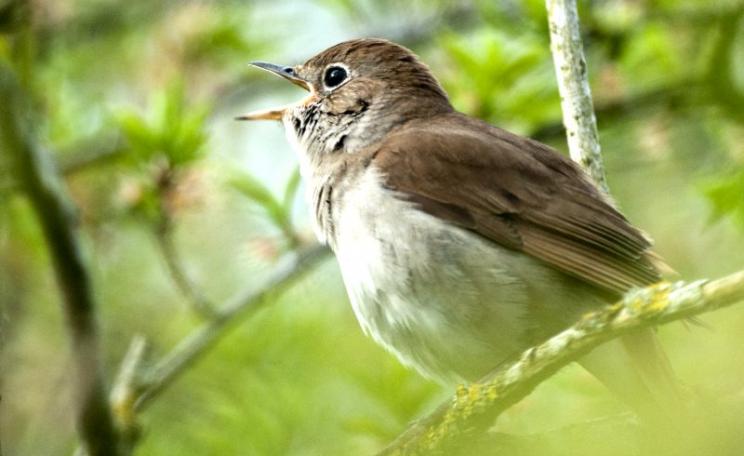The wild Eglantine rose (Rosa rubiginosa), available from davidaustinroses.com
Winter is the best time to plant roses. They should be bought from specialist rose growers in ‘bare root’ form. Bare root plants are sold without soil, which allows the rose to establish well.
In the eco garden we only want roses that benefit wildlife. Single and semi-double flowers have their stamens exposed (rather than buried beneath a rosette of petals) so pollinators such as honeybees can access the pollen.
Rose hips are also important, providing food for the birds in autumn. For this, look to the wild rose species and their close relatives.
Also a bonus for the eco garden, are roses that don’t require spraying with chemicals because they don’t succumb to diseases such as black spot. In this respect, ancient roses (which have stood the test of time) and very new roses that have been bred for health (such as ‘Kew Gardens’ by David Austin) are best.
Here is a selection of roses that the wildlife in your garden will love:
FOR SMALL-MEDIUM GARDENS
*‘Mary, Queen of Scots’
This lovely rose has an abundance of lavender pink flowers in summer and then dark mahogany hips in the autumn. 90cm x 90cm.
*’Rosa Mundi’ (Rosa gallica ‘Versicolor’)
This gorgeous raspberry-ripple rose has pink and white striped petals and a lovely scent. It is very old, dating back to at least the 12th century. 90cm x 90cm.
*’Kew Gardens’
A very elegant single white rose bred by David Austin, which produces small red hips in the autumn. It is reliably healthy and completely thornless. 1.5m x 90cm.
*Rosa nitida
A great ground cover rose, which has cerise pink flowers in summer and then fiery foliage and red hips in the autumn. 80cm x 80cm.
FOR MEDIUM-LARGE GARDENS
*’Dupontii’
Beautiful white flowers with golden stamens, which exude a delicious scent of banana. Followed by orange hips in the autumn. 1.8m x 1.2m
*’Scarlet Fire’ (‘Scharlachglut’)
This rose is officially known as ‘Scharlachglut’ (which I think should always be shouted). It has red summer flowers followed by urn-shaped hips. 1.8m x 1.8m
*‘Geranium’
This shrub is coated in small scarlet flowers in summer, but has its finest hour in the autumn when it is bejeweled with huge flagon-shaped hips. 2.5m x 1.5m
FOR WALLS & PERGOLAS:
*’Francis E. Lester’
A very pretty, hardy rambler that has strongly scented pink and white flowers in summer, and an abundance of orange hips in autumn. 4m x 3m
*’Cupid’
This romantic rose has huge blush-pink flowers that are delicately crumpled. Orange hips in the autumn. 3.5m x 3m
*’Penelope’
Scented cream pink flowers with golden stamens, on arching stems, and small hips in the autumn. It can be grown as a shrub or climber. 2m x 1.2m
FOR DECIDUOUS HEDGING
*Rosa rubiginosa (Eglantine)
The Sweet Briar forms a romantic hedge of apple-scented foliage and pink flowers, with hips in autumn. 1.5-2.5m high. Plant hedging 30-60cm apart.
*Rosa glauca Pourr.
Grey-purple foliage and burgundy stems, paired with small magenta flowers in summer and hips in the autumn. 1.2m-2m high. Plant hedging 30-60cm apart.
*Rosa rugosa
White (Rosa rugosa ‘Alba’) or shocking pink flowers, emerald foliage and bristly stems, followed by orange-red hips. 1.2m-2m high. Plant hedging 30-60cm apart.
SUPPLIERS:
David Austin, 01902 376300, davidaustinroses.com
Trevor White, 01603 755135, oldroses.co.uk
Peter Beales, 01953 454707, classicroses.co.uk
Hazel Sillver is a freelance journalist and a contributor to the Ecologist Green Living section; email: hazel@theecologist.org




